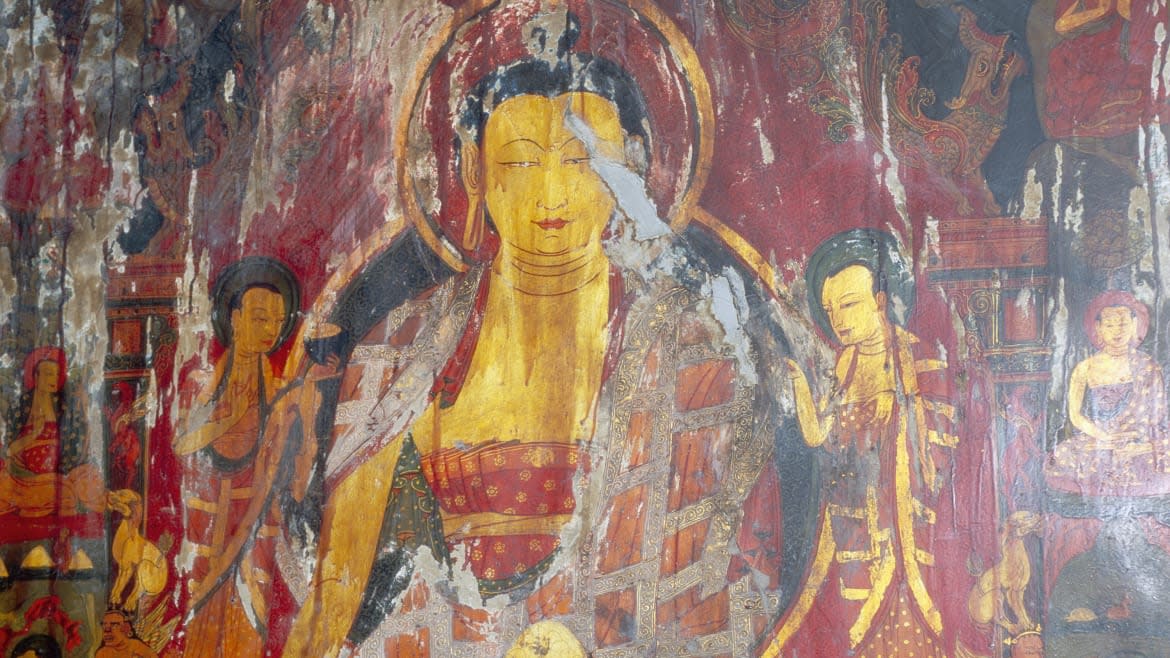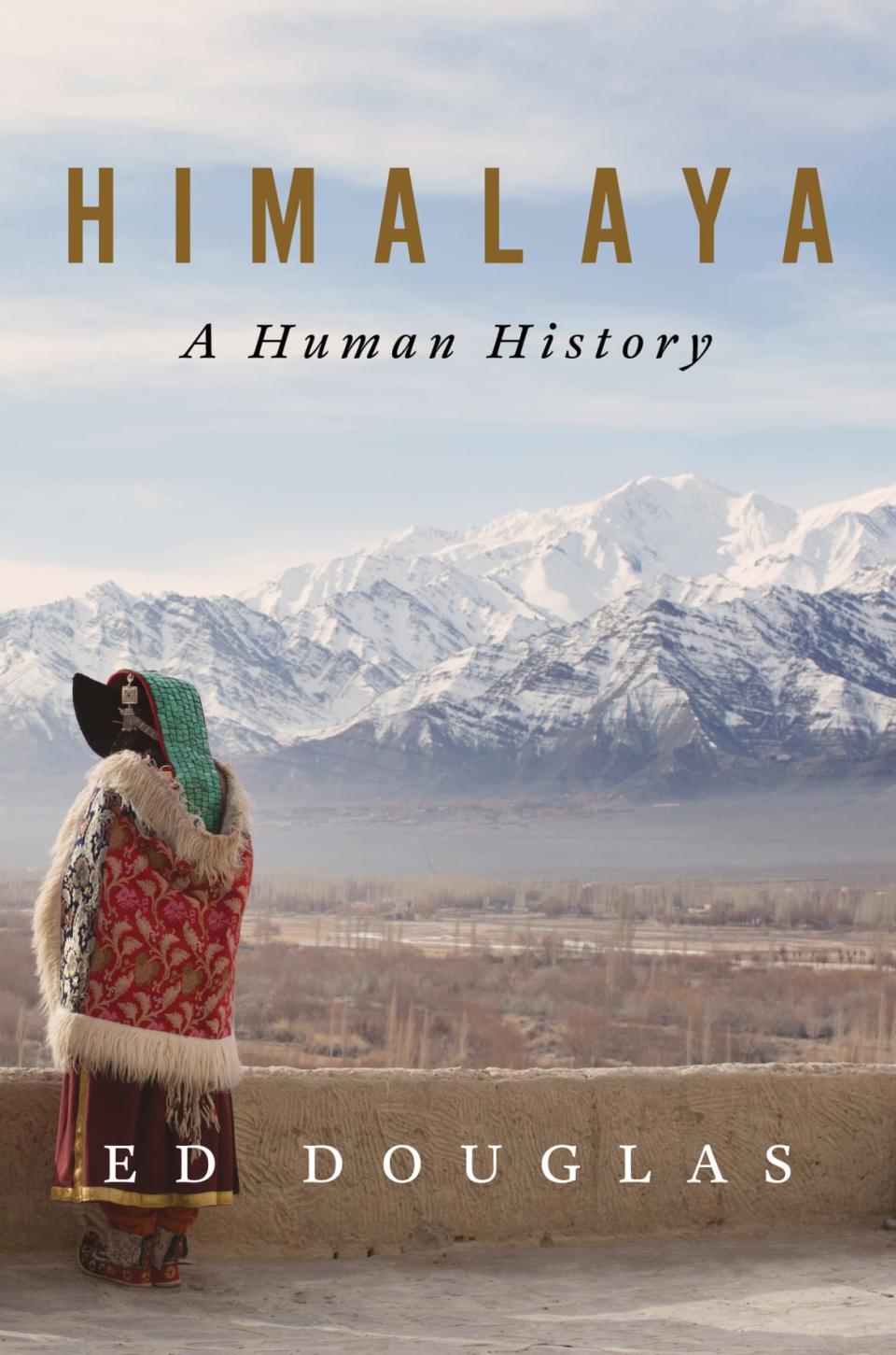The Religious Zeal Behind Europe’s Tibet Curiosity

Europe’s discovery of Tibet was enmeshed with missionary intent: it was Franciscan monks who brought Europe many of the first descriptions of the country.
In 1245 Giovanni da Pian del Carpine, a companion of St Francis of Assissi, was the first European to report back on the Mongol court in his Ystoria Mongalorum, sent east by the pope in the aftermath of the Mongol invasion of Europe. Like Marco Polo he noticed the Tibetans there, an intrinsic element in the spiritual life of the elite, and described aspects of their lives, including jhator, usually described in the West as sky burial, the ritual dismemberment of the dead for consumption by carrion but a term many Tibetans dislike. Another Franciscan, Odorico Mattiussi, better known as Odoric of Pordenone, included a whole chapter on Tibet in his account of visiting China in the 1320s: ‘Concerning the Realm of Tibet Where Dwelleth the Pope of the Idolators.’ Odoric’s claim to have visited Tibet may be true, although much of his material was clearly gleaned from encountering Tibetans outside the country, and the suggestion he visited Lhasa is widely discounted.
It was the Jesuits, with their pragmatic zeal, who really got stuck in towards the end of the sixteenth century. Jesuits at the Mughal court of Akhbar were well aware of Tibet. Rodolfo Acquaviva, shortly before he was butchered in Goa during the Cuncolim Revolt, wrote of the land of ‘Bottan’ beyond the Himalaya in 1582.
In the Mongolicae legationis commentarius of 1591, Antonio Monserrate wrote of lost vestiges of Christianity hidden in the remote valleys of the Himalaya where priests read from the scriptures and distributed the bread and wine, although he discounts the possibility that these were Tibetans, who he describes as being governed by magicians. They discovered the existence of Lake Manasarovar and of a city nearby: the book is accompanied with a crude map showing the lake with the legend Hic dicunter Christiani habitare: ‘here it is said there are Christians living.’
It would be easy to overstate the scale of the Jesuit interest in the lost world of Prester John. Tibet was mostly a footnote to their main concerns: China, Japan and India. In 1596 Matteo Ricci, leader of the Jesuit mission to China, did call for for an exploration of the lands between the Mughal and Manchu empires. And Monserrate’s description of a lost Christian congregation living in the Himalaya certainly inspired the Portuguese António Andrade, head of the Jesuit mission in Agra where Jahangir Khan was in the last years of his reign. Andrade joined a party of Hindu pilgrims to Badrinath, in the modern Indian state of Uttarakhand, traveling with his fellow priest Manuel Marques up the Alaknanda river towards the Tibetan border. Leaving Marques behind, Andrade followed the valley. Traveling in the shadow of the mountain Kamet, only fifteen miles north of Badrinath, he reached the Mana Pass at 5600 meters, suffering from snowblindness and the ‘noxious vapors’ Andrade believed was the source of his altitude sickness. He saw before him the high barren plateau of Tibet: the first European to describe the wearying reality of Himalayan travel. He must have thought himself on another planet.
Andrade returned to Badrinath and after a month retraced his steps, this time with his companion, entering Tibet to witness the dying embers of the Guge kingdom. Much of its power had drifted east to Lhasa and west to a resurgent Ladakh. The king of Guge was nevertheless open to the idea of Christianity. It was possible that Bodhisattvas might have arisen in the West. And since truth could not harm truth, why shouldn’t Andrade preach the gospel and challenge the teachings of Buddha? Andrade returned home and in 1625, with permission and funds from his superior in Goa, established a chapel at Tsaparang, the astonishing citadel and monastic complex in the Sutlej valley. A small number of priests struggled to keep the mission going through the late 1620s and their accounts provide valuable insights into the religious and economic life of Guge. Andrade was intrigued at how closely the Tibetan monastic orders resembled Christian ones. Yet their efforts were in vain.
In 1630, Tsaparang fell to the great Ladakhi king Sengge Namgyal, who built the impressive palace at Leh and founded Hemis monastery. He enslaved the few hundred converts the Jesuits had made including two of the priests: it took a concerted diplomatic effort to extract them from Leh. The kingdom of Guge began its swift decline into the obscurity Tucci witnessed in 1933. Climatologists have recently discovered that the monsoon weakened considerably in the early seventeenth century, plunging western Tibet into a period of desertification, suggesting Guge’s failure was as much a consequence of climate change as invasion. The last king of Guge died in 1676.
The Jesuit attempt to convert Tibet might have been overly optimistic but it was determined. In February 1627, two more Jesuits, Estevão Cacella and João Cabral, became the first Europeans to enter Bhutan, where they were soon robbed and thrown in prison. They did encounter the first king of Bhutan, the Kagyu monk Ngawang Namgyel, and following Monserrate’s lead, asked about neighboring regions in hopes of locating any lost communities of Christians. They were told about Shambhala, which they mistook as being Cathay, whose location was a question of burning geographical interest to Jesuit missionaries across Asia. (Was Cathay the same as China? Or somewhere else?) Their account of this journey included the first reference from a European to this mythical paradise, its origins in the half-forgotten shamanic past of western Tibet. This lost world of perfection, such an obvious parallel to Eden, and the tenuous linking of Christianity and Buddhism, would become a compelling subject to adventurous spiritual seekers in the late nineteenth century. Switched on to Tibet by growing academic and philosophical interest in Buddhism – Hegel was fascinated by the notion of emptiness – new-age mystics climbed on board the bandwagon, including the Theosophist Helena Blavatsky, whose concocted band of enlightened beings, the Masters of the Ancient Wisdom, she claimed to have met Tibet.
All these disparate strands coalesced in James Hilton’s 1932 novel Lost Horizons, whose exotic setting is the hidden world of Shangri-La where moral and spiritual perfection endure: for some in the West it’s an idea that almost defines the Himalaya. Hilton’s hero Conway and three companions are kidnapped on board an aircraft, which crash-lands near the remote monastery of Shangri-La whose mysterious head lama is in reality a Christian missionary priest who arrived in the early eighteenth century and has achieved immense longevity. The setting, a lost world of moral purity, is largely emblematic. Hilton’s novel has little to do with the reality of Tibet and more to do with its celebrity as somewhere unexplored. None of the central characters are Tibetans: they are almost exclusively cast as servants and characterized as noble savages. Almost nothing of Tibetan culture emerges from its pages. In the monastery’s library, Conway finds some of the books Hilton drew on in his research in the British Library, including Andrade’s account of Tsaparang and the kingdom of Guge. The sacred mountain Hilton locates near Shangri-La bears close comparison to Kailas. The mystical order who inhabit the monastery echo Theosophist Tibetan fantasies.
The book is not about Tibet at all; its themes are moral exhaustion after one world war and anxiety about the next, and a critique of consumerism. Yet the notion of a secret valley of spiritual refreshment and healing resonates in Tibetan culture, which prizes the esoteric, represented in the idea of beyul, sacred valleys whose secret locations are concealed in texts waiting to be read by spiritual masters. There’s a need for Eden, or Shambhala, in all of us.

Excerpted from Himalaya: A Human History by Ed Douglas. Copyright (c) 2020 by Ed Douglas. Used with permission of the publisher, W. W. Norton & Company, Inc. All rights reserved.
Get our top stories in your inbox every day. Sign up now!
Daily Beast Membership: Beast Inside goes deeper on the stories that matter to you. Learn more.

